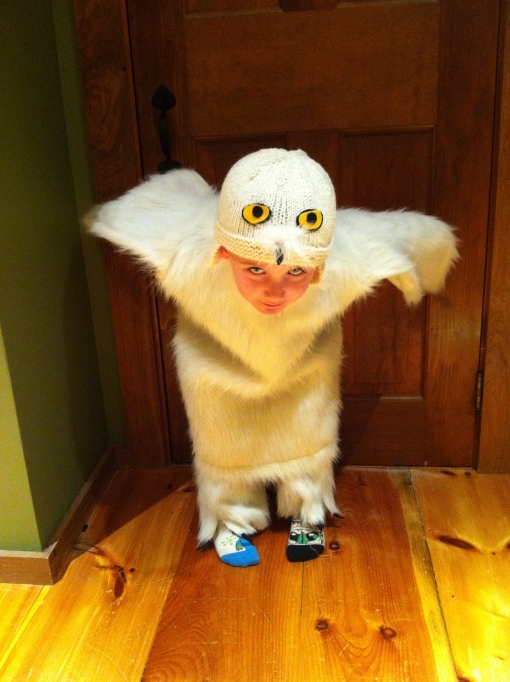It’s a snow day here in New Hampshire (again), so what more fitting topic than Snowy Owls as my whole family sits, snow bound, in our house?
This winter has seen remarkable numbers of Snowy Owls making forays south to the Northeast, Great Lakes, and a rare bird even as far south as North Carolina and as far out to sea as Bermuda. It looks like this irruption may be waning, as anecdotal reports from fellow owl-enthusiasts and Seanetters appear to be dwindling, and February is usually when the birds start to disappear from birders’ checklists, at least in a more normal year. Back in December, I went out on my own SEANET survey and spotted two of the owls, one sitting on a jetty at Salisbury Beach Reservation, and one hanging out on someone’s roof, putting one of those plastic Great-Horned Owl decoys to shame.
We’ve gotten a lot of questions about what drove these birds farther south, and the plain and simple answer is, we don’t entirely know. But there is a serious contender in terms of hypotheses. Generally, when birds show up in significant numbers outside their normal range, two categories of causes come to mind: life has become difficult in the homeland and they’re striking out for greener pastures, or, conversely, life has been so good in the homeland that more birds are surviving, and there isn’t room for them all, pushing some of them into new territory in unaccustomed lands. So far, it looks like this latter explanation may be closer to the truth for the Snowy Owls this year. The summer of 2013 was a banner year for small rodents called lemmings up on the Arctic tundra where the owls breed. Given this boom of rodents, the owls were in a heaven of food and may have been able to fledge two or three youngsters from each nest, rather than the one or even zero they’re able to raise in very lean years. Once they leave their parents, those youngsters need to find hunting grounds of their own. With so many owls prowling around, some would have been pushed farther south in search of wide open plains for hunting. Hence, their appearance at airports and coastal marshes here in the U.S.
Complex as the food webs are in the Arctic, they are fairly simple compared to many. The cyclic boom and bust nature of lemming populations looks similar to the classic ecology textbook example of snowshoe hare populations cycling alongside lynx populations. As with that system, it can be challenging to tell whether the collapses in prey species populations is more due to rising pressure from increasing numbers of predators, or because the rising numbers of the prey species are simply eating themselves out of house and home. Whatever the primary driver, it does appear that Snowy Owls were not hurting for lemmings this year, and those of us who’ve had a chance to see the birds this winter are grateful for getting to see them, and because it seems to be reflecting a great success for them this year.
The irruption can’t go on forever, and some of you may not have gotten to see one of these incredible birds this year, but everyone can learn more at the website of Project SNOWstorm, a collaborative research project tracking the birds through both sightings and via satellite transmitters placed on several birds. You can check out the maps showing the travels of individual birds, and follow all their findings as this event draws to a close with the end of winter.
